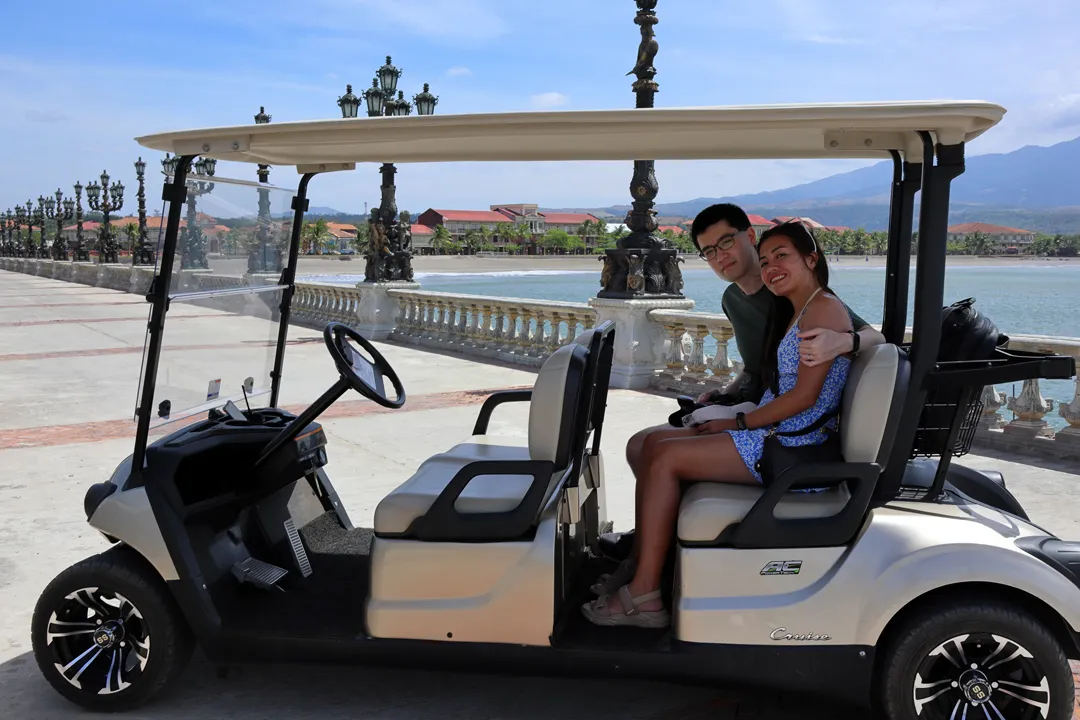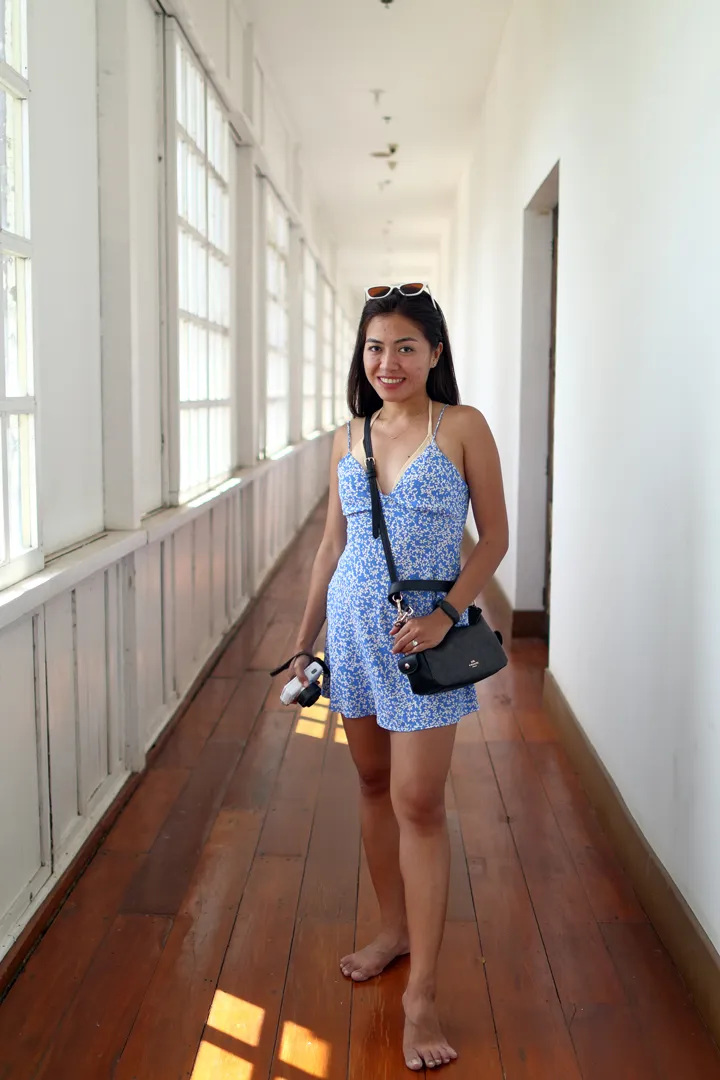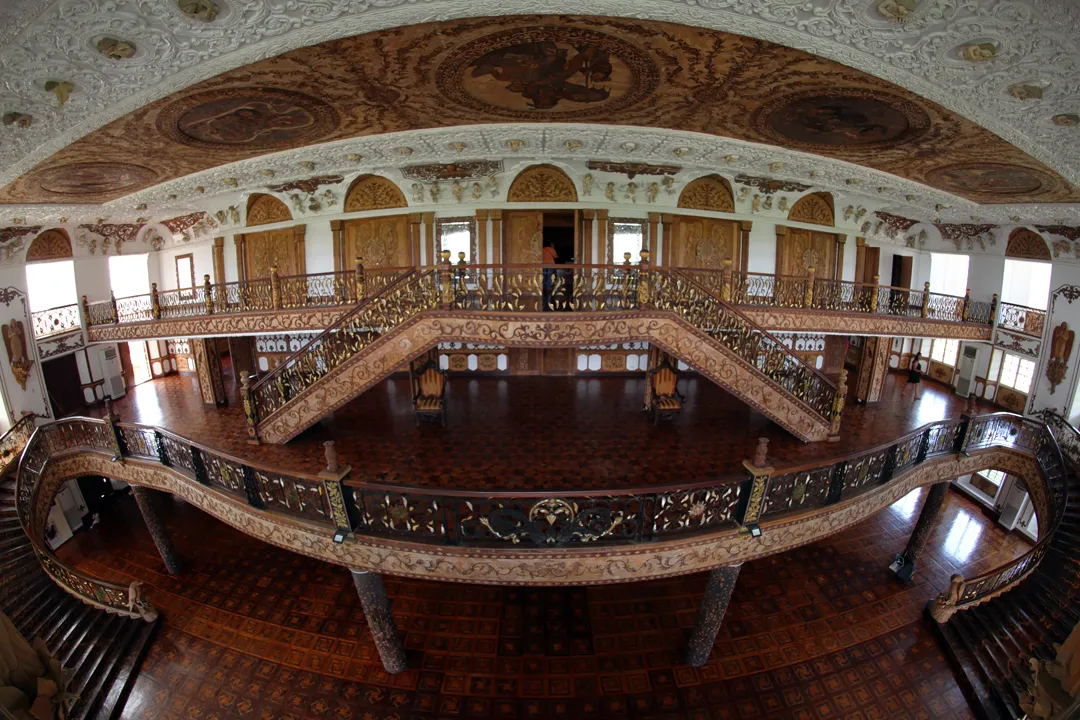Well-preserved historical buildings are generally few and far between in the Philippines. However, a large concentration of them may be found at Las Casas Filipinas de Acuzar in Bagac, Bataan, having been moved there for preservation from various places across the country.
We decided to go there on the first full day of our trip to Bataan, since Ritz was quite eager to see it. Rancho Bernardo Luxury Villas and Resort, where we were staying, happened to have a partnership with Las Casas Filipinas, so the receptionist was able to arrange free transportation as well as discounted admission for us.

The ride from the resort only took 10-15 minutes. The golf cart could actually be used inside Las Casas Filipinas, which was a big advantage since the complex was fairly large and most of the other visitors could only get around on foot.

First, our driver brought us out to the end of breakwater that extended far into the sea. The purpose of this structure was unclear – it was over 500m long and had no shade anywhere, so not a single visitor was walking on it.


After posing for some photos on the breakwater, we went back to the main area and then explored around some of the buildings while our driver took a break.



The largest building in Las Casas Filipinas was the three-storey event hall. Since no event was being held there at the time, we could freely go around inside.



We finished seeing most of the buildings around early afternoon. Although we also wanted to see what everything looked like at night, we would have had to pay the admission fee again to re-enter later, so we decided against it. Overall, though, Las Casas was still very worthwhile to visit since no comparable place exists anywhere else in the country.
On the second and last full day of our trip we did not spend as much time outside but I was interested in seeing the Mount Samat National Shrine, about an hour away by car. To understand why it is one of the most significant war memorials in the Philippines, we must take note of the key role that Bataan played in the Second World War.
It is widely known that that the war in the Pacific began on 7 December 1941, when Japanese naval aviation launched a surprise attack on the American base at Pearl Harbor, Hawaii. What may be lesser known, however, is that Japan also simultaneously struck multiple locations across Southeast Asia with the goal of taking control of the entire region. On 10 December, the first Japanese units landed on Luzon. By January, Japan had captured all of Luzon except for Bataan.
In Bataan, the remaining Allied defenders, cut off from supplies and reinforcements, managed to hold out against the Japanese until April 1942. The Mount Samat National Shrine commemorates their bravery.
In the modern day, we can simply drive up the mountain to the entrance of the memorial and then walk to the summit on a paved road. The difficulties faced by soldiers in 1942 are almost unimaginable – having to traverse the jungle terrain on foot while starving and constantly threatened by the enemy. For me, it was important and profound to reflect on this while visiting the memorial. Mount Samat, unlike most war memorials in cities, had few visitors and no distracting ambient noise such as sound from traffic, making it a good place for quiet contemplation.

The most notable feature of the Mount Samat National Shrine is that it contains the world’s second highest cross, easily visible from afar. Regrettably, we could not go to the top of the cross; it had been closed because of the pandemic and had not been reopened when we visited. Nonetheless, it was still possible to get unobstructed views in most directions from the area around the base of the cross.

The following morning, we repacked our bags and headed back to Manila in preparation to fly to Japan. Although our trip to Bataan had never been in our initial plans, we fortunately found plenty to experience there.
Next: Getting to Shimane Prefecture: Manila to Yonago via Tokyo Haneda
